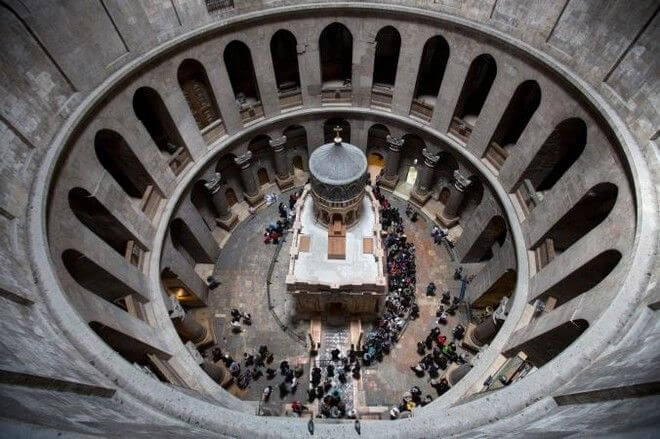
Jerusalem’s Church of the Holy Sepulchre has gone through violent attacks, fires, and earthquakes over the centuries. It was completely destroyed in 1009 and later rebuilt, which made modern scholars question whether the site could be identified as the burial place of Jesus Christ by a delegation sent from Rome seventeen centuries ago.
The results of scientific tests that are provided to National Geographic, now appear to confirm that the remains of a limestone cave preserved within the church are the tomb's remnants located by the ancient Romans.
According to historical accounts, Jesus' tomb was discovered by the Romans around 326. Until now, the earliest architectural evidence discovered in and around the tomb complex dates to the Crusader period, which makes it no older than 1,000 years.

It is archaeologically impossible to claim that the tomb is the burial site of a person Jew who was known as Jesus of Nazareth, crucified in Jerusalem in around 33. Still, according to new dating results, the original construction of today's tomb complex is put in the time of Rome's first Christian emperor, Constantine.
In October 2016, the tomb was opened for the first time in centuries, when the shrine which encloses it, the Edicule, underwent an important restoration by an interdisciplinary group from the National Technical University of Athens.
Several samples of mortar from various locations within the Edicule were taken for dating, and the results were lately provided to National Geographic by Antonia Moropoulou, Chief Scientific Supervisor, who directed the Edicule restoration project.
When the tomb was opened on October 26, 2016, scientists were shocked by what they discovered beneath the marble cladding: an even older marble slab incised with a cross, which rested directly upon the original limestone surface of the "burial bed."
Several researchers speculated that the older slab might have been laid down in the Crusader period. Others offered an earlier date and suggested that it might have already been in place and broken when the church was totally destroyed in 1009. However, no one was ready to say that this might be the first physical evidence for the earliest Roman shrine on the site.

The mortar samples were separately dated at two different labs using optically stimulated luminescence (OSL). That's a technique which determines when quartz sediment was most lately exposed to light. The scientific results are going to be published by Moropoulou and her group in a forthcoming issue of the Journal of Archaeological Science: Reports.
Reference: National Geographic
AP Photo/Sebastian Scheiner













If compelling evidence are presented, I will believe
ReplyDelete